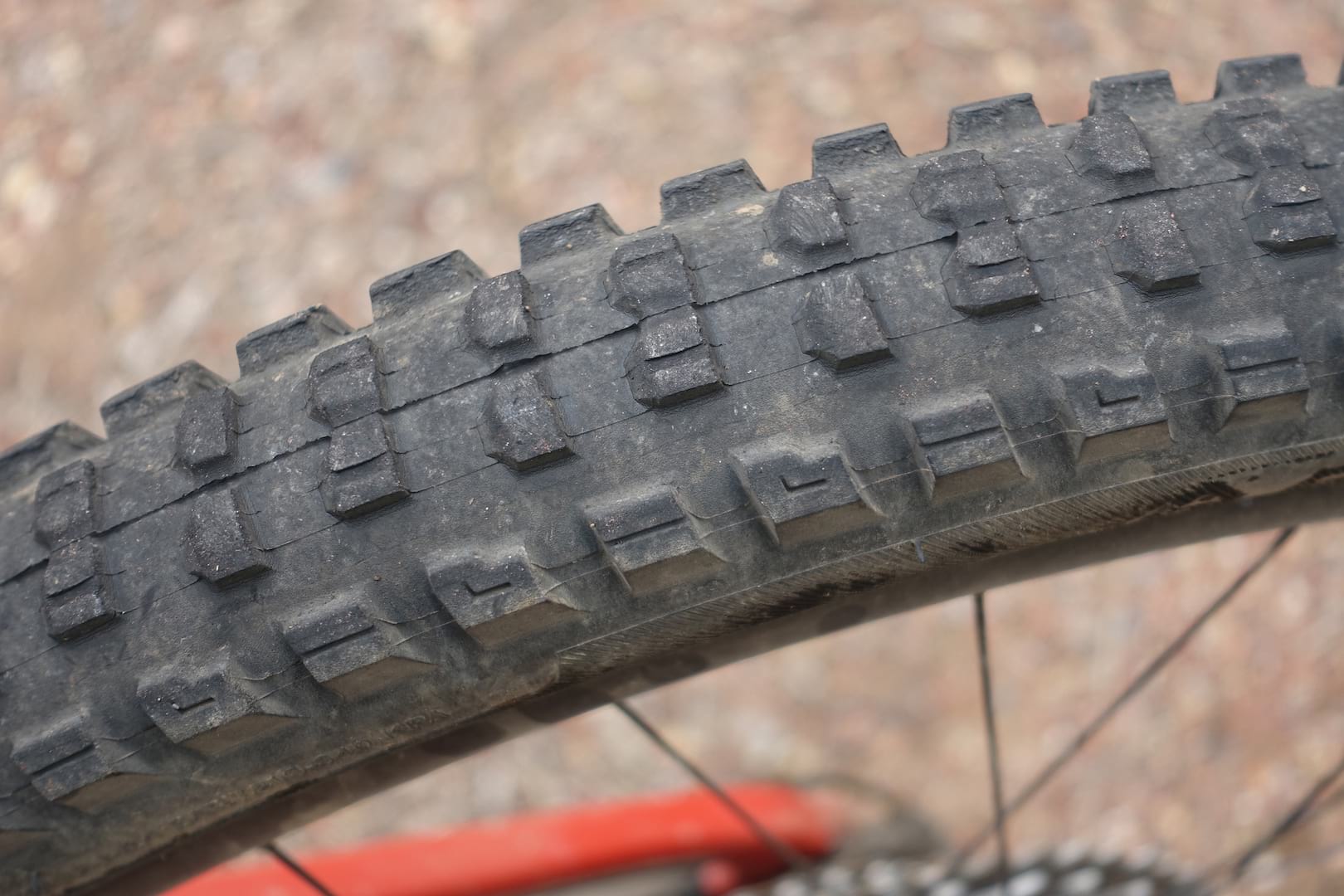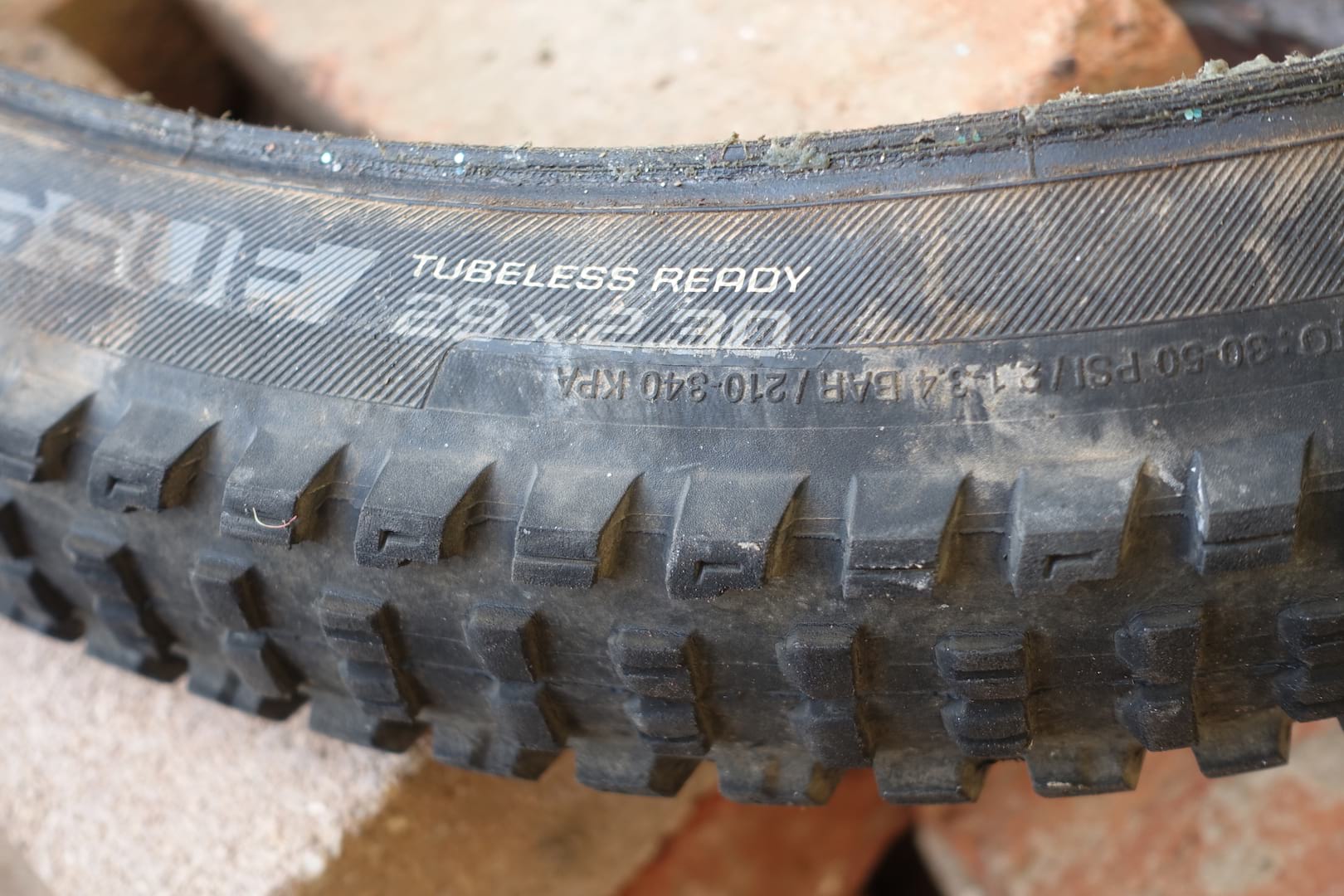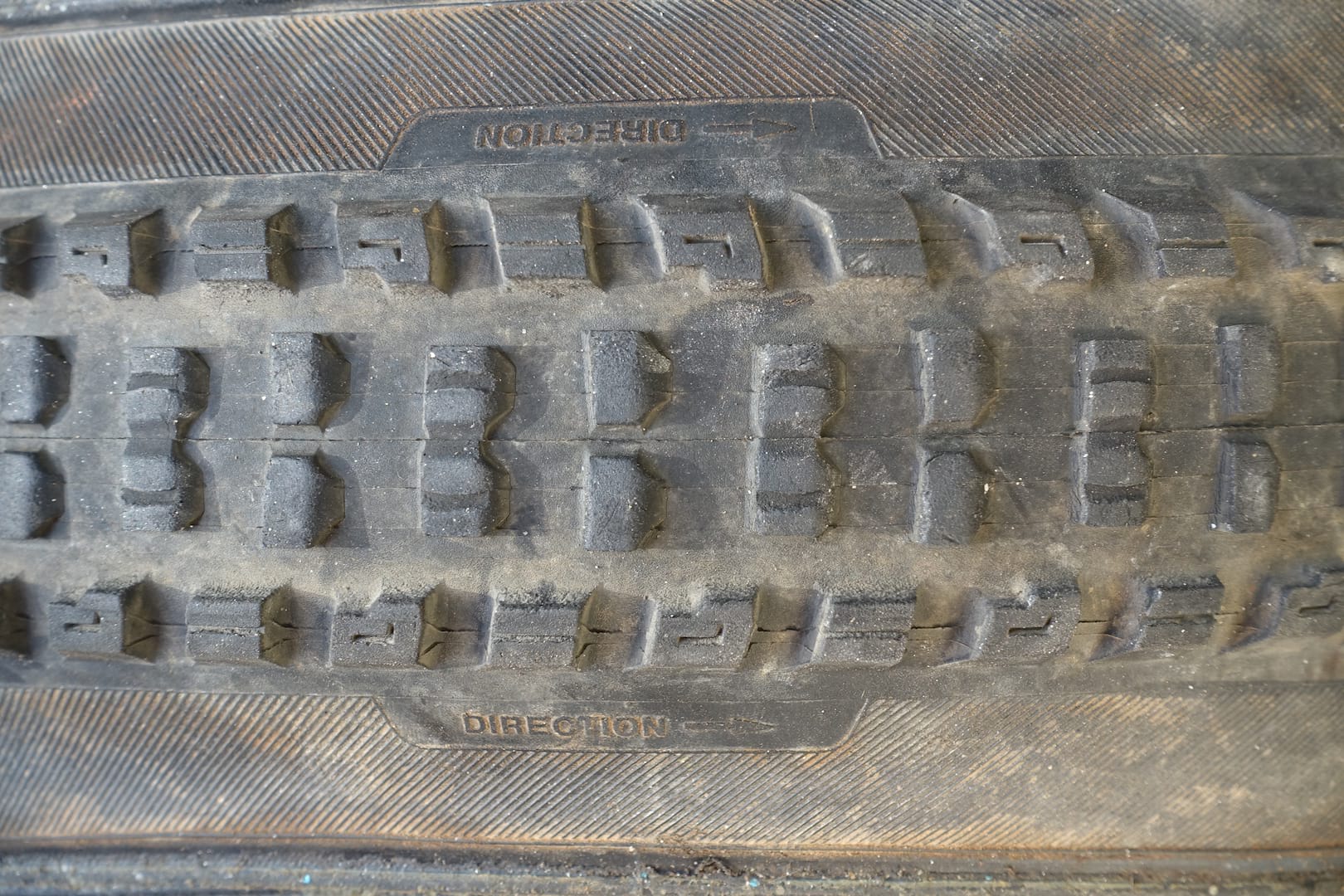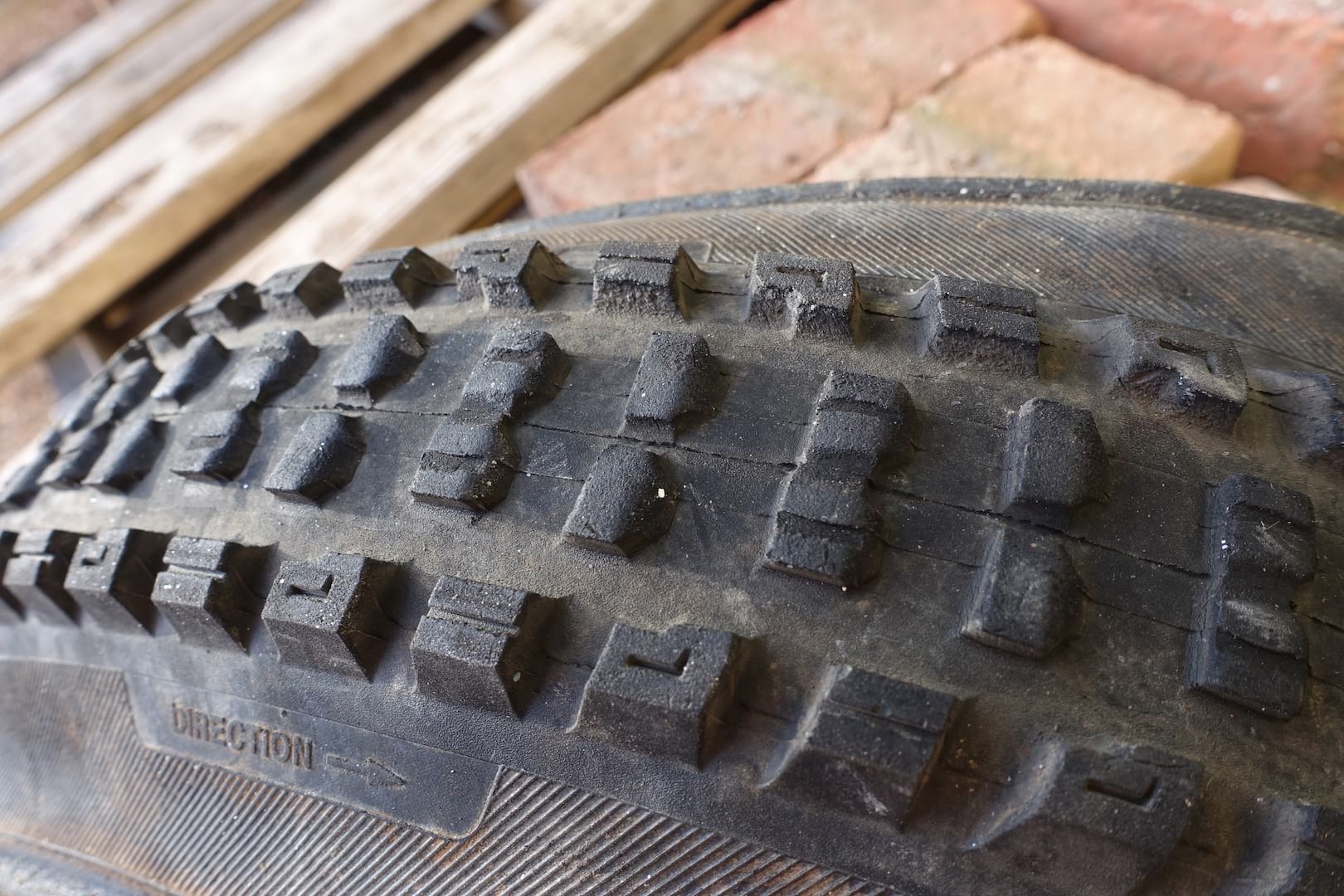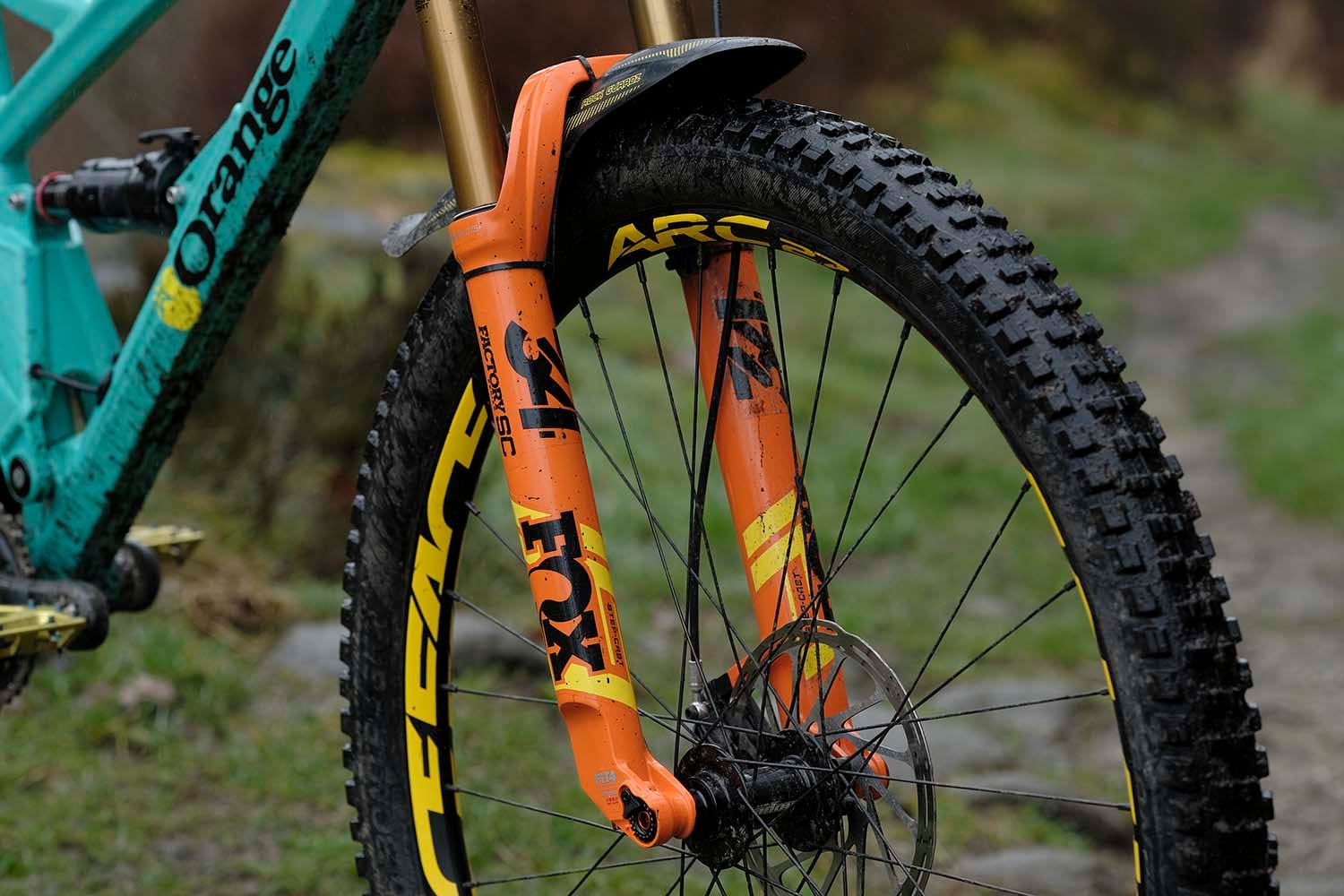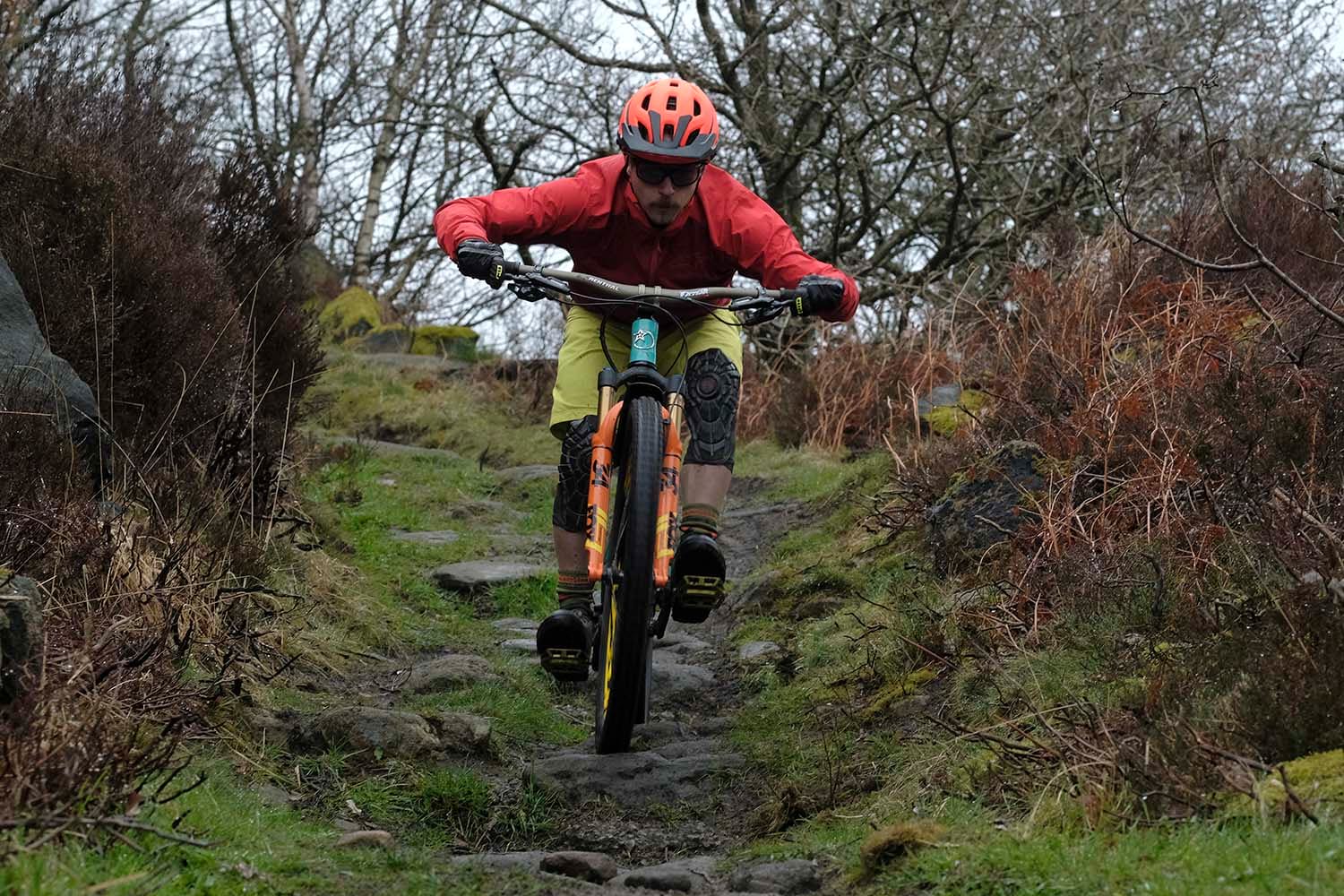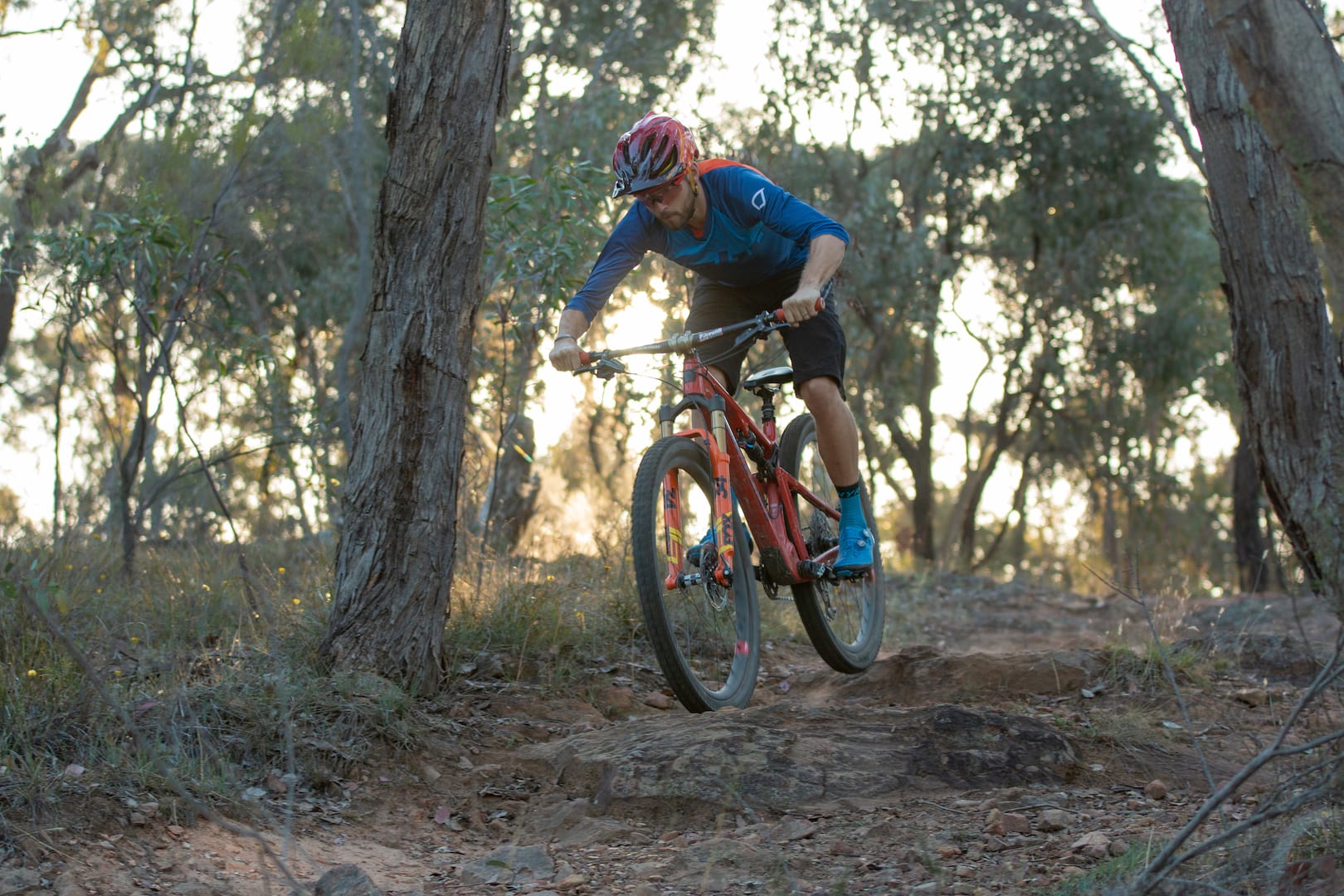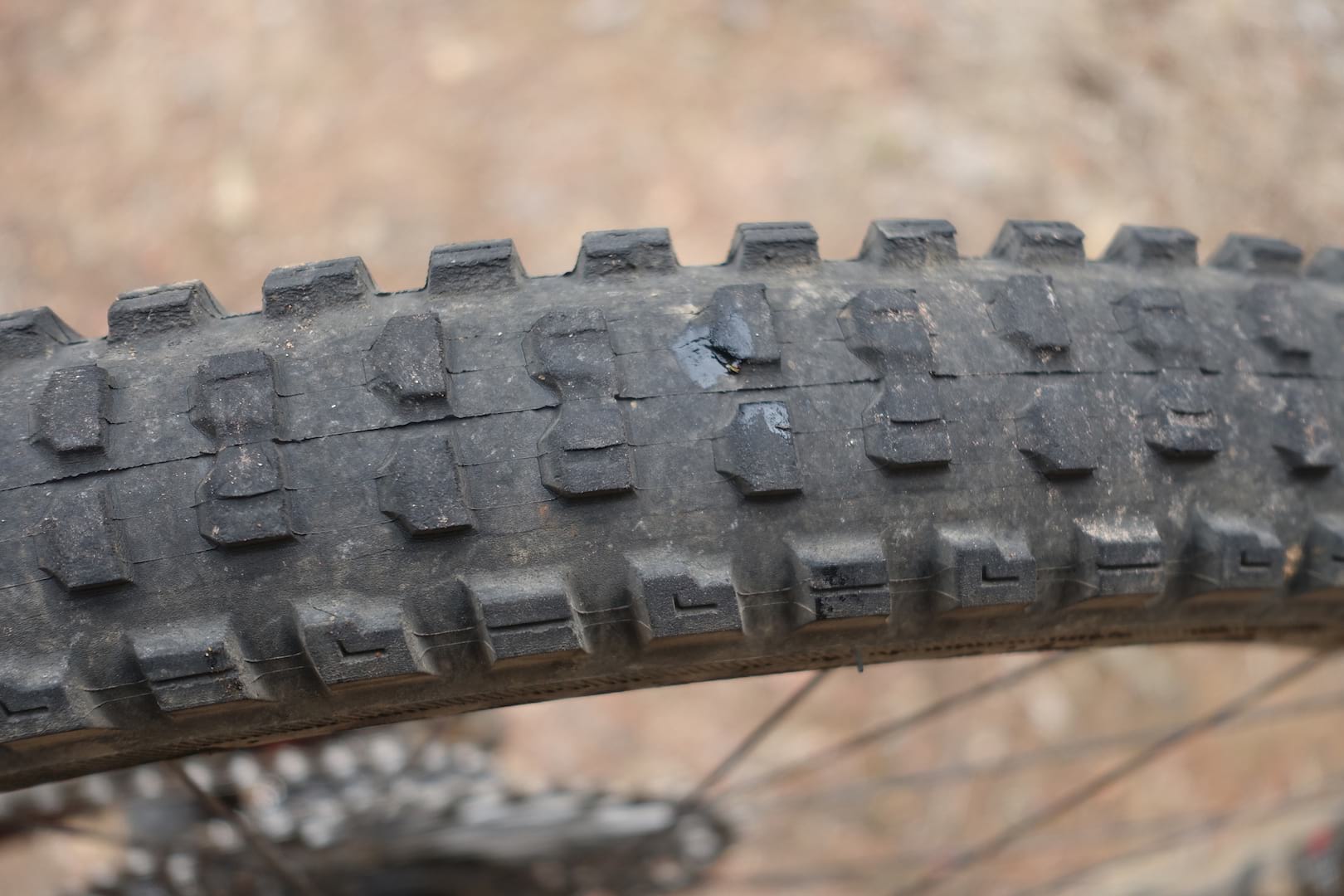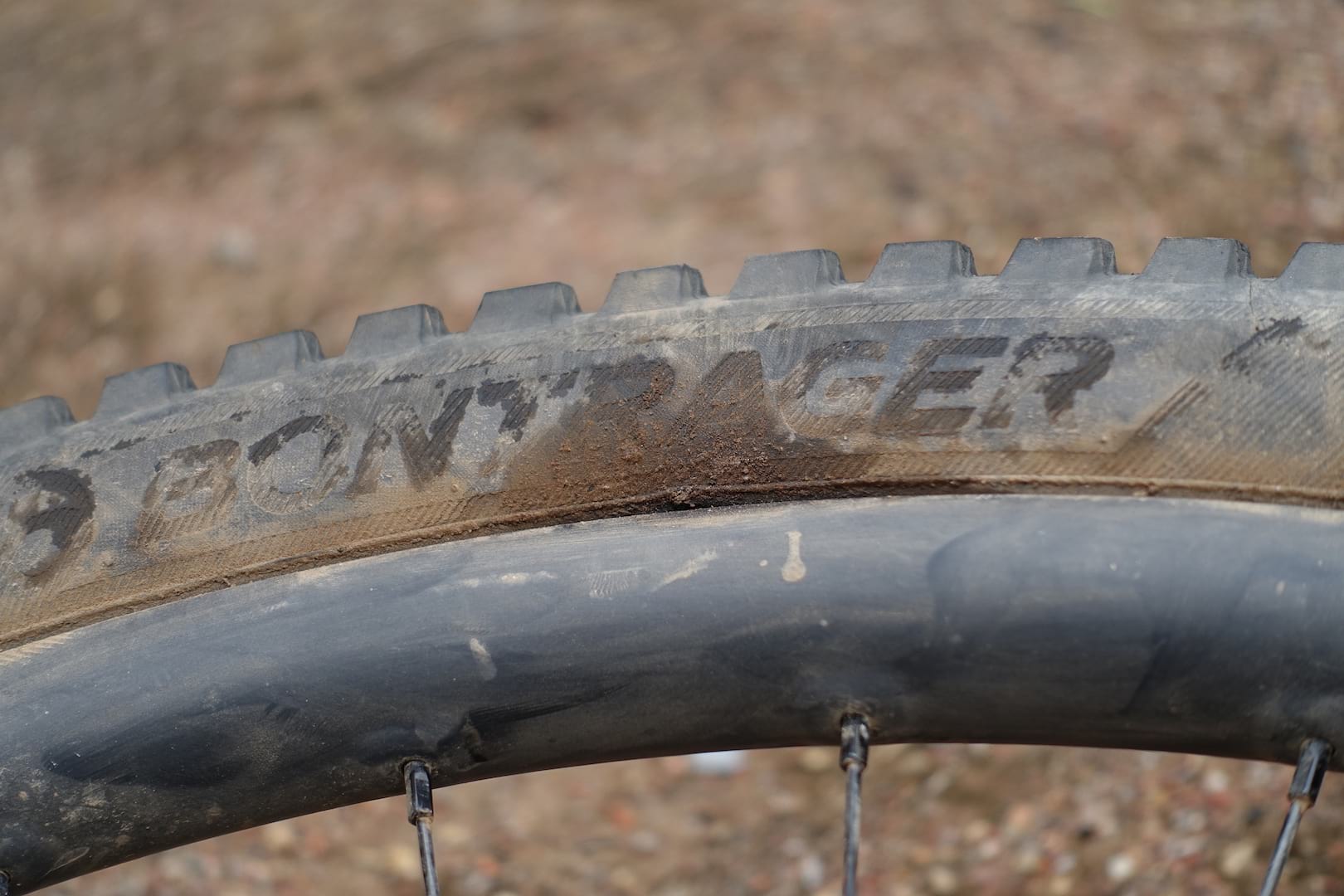As condition-specific as mountain bike tyres are, some are just a little more versatile than others. Like this Bontrager XR5 Team Issue tyre I’ve been testing for the past 12 months.
Having already enjoyed such a positive experience with the Bontrager SE4 – a tyre that earned itself a Singletrack Recommended award – I had high expectations when the XR5 first showed up. Since it features a knobblier tread pattern than the XR4 and SE4 tyres, the XR5 is purportedly better suited to loose trail surfaces in medium-to-wet conditions. Sounds ideal for the Grim North™ then eh?
On test here is the XR5 Team Issue tyre. Boiled down to the fundamentals, it combines dual compound rubber, a blocky tread pattern and a relatively lightweight and supple 120tpi casing to create a sticky and dependable tyre for aggressive trail riding.
Bontrager XR5 Team Issue TLR Tyre Features
- Trail tyre designed to excel in loose, rocky and wet conditions
- Size tested: 29×2.3in
- Also available in 27.5in diameter, and 2.6in widths
- 61a/50a dual compound rubber
- Inner Strength reinforced sidewalls
- Lightweight 120tpi casing
- Tubeless Ready (TLR) bead
- Confirmed weight: 866g & 846g
- RRP: £39.99 / $79.95 AUD
Construction
The pair of XR5 Team Issue tyres I’ve been testing are the 29×2.3in size. The same tyre is also available in a 27.5in diameter, and you can also get it in the new-school ‘British Plus’ 2.6in width. For hard chargers, the SE5 uses the same tread pattern with a heavier and more robust enduro-ready casing.
Latest Singletrack Merch
Buying and wearing our sustainable merch is another great way to support Singletrack
Weighing in at an impressive 846g and 866g, the XR5’s initially replaced a Maxxis Minion DHF EXO 3C MaxxTerra (990g), and a High Roller EXO (939g), which resulted in a noticeable drop in rotational mass. For further reference, I’ve recently been using a 29×2.3in Specialized Ground Control GRID tyre, which weighs about the same as the XR5 Team Issue, albeit with a lower profile tread pattern.
The finely woven 120tpi casing features Bontrager’s Inner Strength reinforcement, which adds meat to the sidewalls to protect them from slashes and cuts. The sidewalls do feel thicker than your typical XC tyre, but not as thick and stiff as the SE casing, or Maxxis’ DoubleDown casing.
Bontrager has cooked up a dual rubber compound for the XR5, with a softer 50a durometer used for the cornering blocks and a firmer 61a durometer for the centre tread. This rubber compound is exactly what you’ll get on the SE5.
As for the tread pattern itself, it’s very blocky in profile, with the directional design taking just a little bit of inspiration from the Maxxis Minion DHF. One of the differences with the XR5 is that the L-shaped corner blocks get a central cutout to give it a touch more flexibility and bite.
The centre tread consists of a repeating pattern of two rows of rectangular blocks that are much wider and shorter than those on a Minion DHF.
The two individual blocks in the centre are nice and wide, with ramps on the leading edge aiming to lower rolling resistance a touch. The two blocks behind those then get deep vertical sipes to help them pinch the ground, while a rubber bridge between the two aims to stop them squirming about too much.
Setting Up
As I’ve come to expect from Bontrager’s TLR tyres, the XR5 has consistently set up tubeless without hassle on all rims tested. The thick tyre bead always pops onto the rim securely, and I’m yet to require anything but a floor pump to get them seated.
I’ve run these tyres on a variety of rims from 27-30mm wide, including a set of American Classic 3430 wheels, Race Face ARC 27 and ARC 30 rims, and most recently, a set of Santa Cruz Reserve 27 hoops.
On a 27mm wide rim (internal) the XR5 tyre measures up just a hair over the claimed width at 2.32in (58.03mm). That’s worth bigging up, since the aforementioned Maxxis and Specialized tyres consistently come under-sized, which I find terribly annoying.
On The Trail
Though the XR5 Team Issue sizes up to its claimed width, it is visually narrower than the 2.4in SE4 I’d been using prior. Fitted up front in new generation Fox and RockShox forks with their plus-tyre compatible lowers, the XR5 does look rather skinny. It does mean there’s plenty of room for mud-shedding though.
Quite apt then that my first experience of the XR5 was during a very wet and boggy Calderdale winter, where many supposedly ‘versatile’ mountain bike tyres struggle to survive. The XR5 had few issues though, and was noticeably stickier than the XR4/SE4 tyres I’d used prior, and somewhere in between the wet-weather performance of a Minion DHF and DHR II.
It isn’t strictly a mud-specific tyre, and on slick peanut-butter surfaces the rear tyre can spin out if you’re not attentive on the climbs. The tread pattern clears nicely though, and the XR5 does well to claw at soft and loose surfaces with consistency, and therefore, predictability.
Initially setup at 18psi on the front and 21psi on the rear, the XR5 has proved to be supple and comfortable across gritstone-embedded singletrack. The casing can occasionally feel a little flexible though, so bigger riders will want to up those pressures to limit tyre roll under high load scenarios – like railing a sculpted berm at high speed. To help with stability, I’ve actually been using a Vittoria Air-Liner insert with the rear XR5 lately, which has proved to be an excellent combination for slamming into things indelicately.
Since returning to Australia, I’ve continued to run the XR5 on much drier, dustier and rockier surfaces. To ward off the sharp granite that lines much of the singletrack around the Goldfields region in Victoria, I’ve since upped the pressure to 20psi on the front and 25psi on the rear.
On these rockier and hard-packed surfaces, the XR5 does exhibit more rolling resistance than your typical trail tyre. It has terrific damping though, with a wonderfully sticky and connected feeling that helps to filter out small-bumps and surface irregularities. It manages to do this without the knobs squirming about though, which is typically what you’d expect of a blockier tread pattern when riding on hardpack trails.
Even through properly loose and dusty turns, the XR5 holds its line well, with those chunky cornering blocks deliver outstanding cornering grip. Combined with its assertive braking traction, this is a tyre that delivers the kind of dependability you want when charging about on a 120-140mm travel trail bike.
Durability Report
Having used a single pair of tyres for a year now on a variety of different test bikes, across an even wider variety of conditions, I’ve been really impressed with how well the XR5s have held up. The wear rate on the tread has been good, with some mild degradation of the cornering blocks. Unlike some tyres I’ve tested in the past, the XR5 is yet to shed any of of its knobs, which is good.
Although the front tyre has been solid, I did manage to puncture the rear tyre, which happened exactly one ride after removing the tubeless insert. The blame lies squarely on the low tyre pressure I had in the rear tyre (around 22psi) and my haggard line choice that saw a sharp rock causing a hefty pinch flat that put a cut into the crown and the sidewall just above the bead.
Being sub-900g trail tyres, you can’t expect to charge these into vicious rock gardens and forever be free of consequences. If that sounds like a regular trail scenario to you, I’d either recommend running a tubeless insert and/or using the heavier SE5 option for the rear tyre, which gets a tougher casing that’s better suited for properly aggro riders and enduro applications.
Or you could just ride a bit smoother and choose better lines.
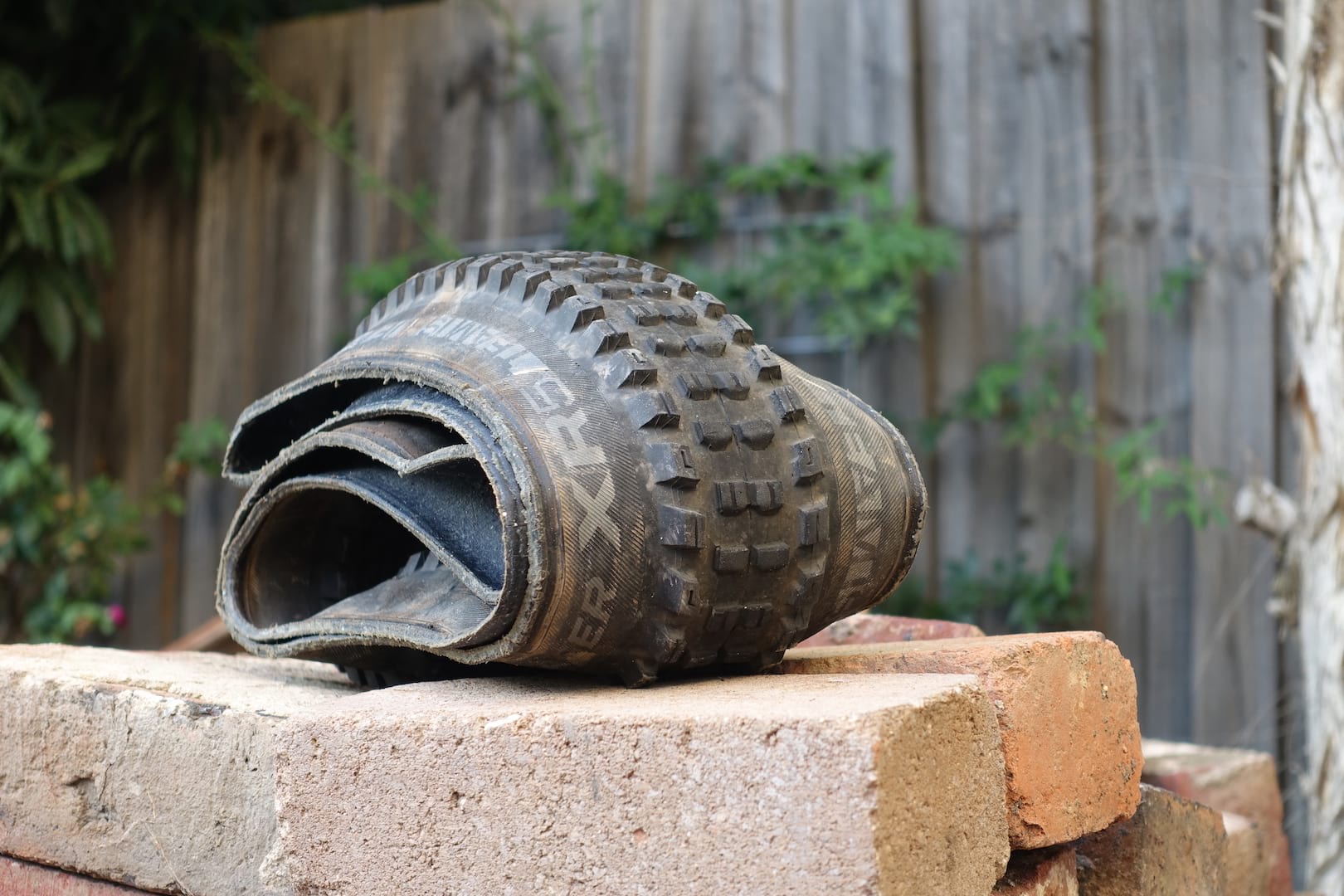
Overall
Balancing price, weight and durability, the XR5 Team Issue is an excellent aggressive trail tyre that offers predictability and reliability in a broad range of environments.
I’d be happy running one of these up front all year round, since the cornering grip and braking traction is so good. For the summer months, pair it to a faster-rolling rear tyre for a little more pep in drier conditions. In winter, run it front and rear for more stick when things get loose and slippery. And for the properly nutso riders tackling alpine terrain, consider the SE5 – at least for the rear.


